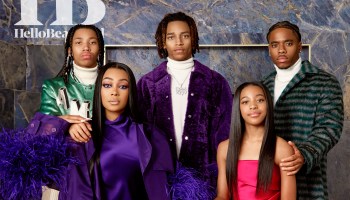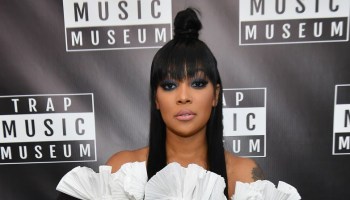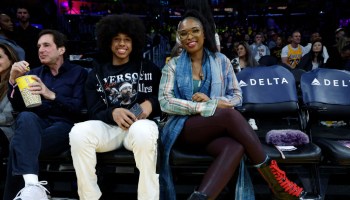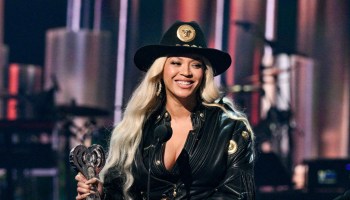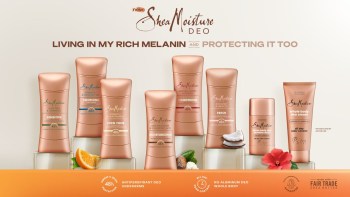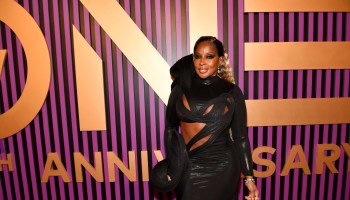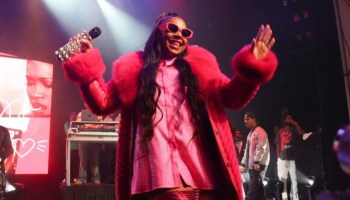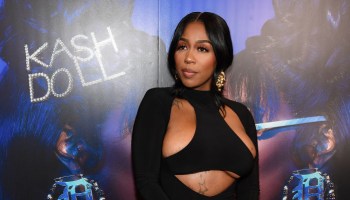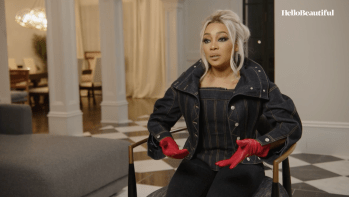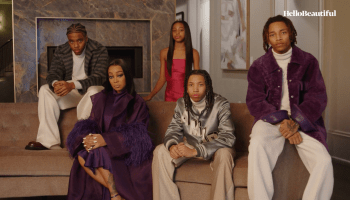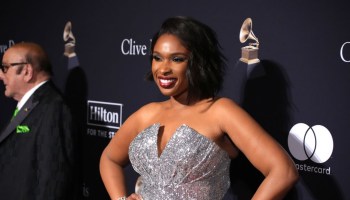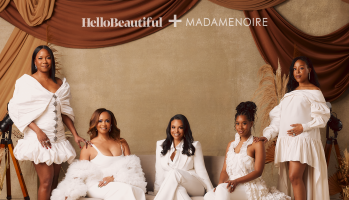Diversity is trending. Within the fashion industry, participants constantly mirror each other, creating more sameness than uniqueness in an industry that calls itself creative. However, in more recent years, there’s been a positive societal shift in not only the presence, but also the celebration of idiosyncratic beauty.
Today, CNN has a beautiful feature on Chantelle Brown-Young, professionally known as Winnie Harlow. The 21-year old never dreamed of having this occupation. Growing up she was intensely bullied for her appearance, so much, that she was forced into home schooling. The beautiful Harlow has vitiligo, an incurable, autoimmune disorder causing hyperpigmentation of the skin. The results are white spots that decorate her brown skin. Rising from the persecution of her looks, with over one million Instagram followers, and several fashion campaigns under her belt, she serves as not only an “it” girl, but also an inspiration to many.
Winnie Harlow for DeSigual.
Harlow’s fans love the unique look of this Canadian-born model, often celebrating her differences in creative ways.
http://marilynhightower.tumblr.com/post/135308377809/hello-for-my-painting-final-i-painted-winnie
However, not all admiration was viewed positively. Fans and followers began to imitate her look, creating extreme controversy and anger within the black community.
Winnie responded, encouraging her fans, followers, and even the black community to view these creative expressions as love and admiration vs hate.
“Why do we have to make it a hate crime?” she said. “In a time when so much negative is happening, please don’t accuse those who are showing love and appreciation, of being hateful. It is very clear to me when someone is showing love, and I appreciate these people recreating, loving and broadcasting something to the world that once upon a time I cried myself to sleep over.”
Talented models like Shaun Ross, who is the first albino supermodel, and Diandra Forrest, represent albinism on the runway and in editorials. Albinism is an inherited disorder that is characterized as such when the skin produces little or no pigmentation. There is no ‘cure’ for albinism and these models are living illustrations that no cure is needed.
Shaun Ross.
Diandra Forrest.
The impact of seeing images of people with a similar likeness of you is powerful and necessary. It helps to people to identify, thus facilitating in building self-love and a healthy self-image. The mind can be warped into thinking that something is ‘wrong’ vs. embracing your uniqueness when one feels they are not observed in every day images. The media, large corporations, and fashion houses play massive roles what we see and how we see it. As consumers, it’s necessary to realize that we have the power to request change and demand inclusiveness of various colors, shapes, sizes, and ages represented in advertisement.
Harlow + 10-year old April Star on The Real. April credits Winnie as inspiration to follow her dreams of walking the runway as a supermodel.
Karl Lagerfeld has always been outspoken regarding his disdain of fat women and resistance to using larger size models on the runway. He stated that people prefer to look at “skinny models”, and those who do not are “fat mummies.” The creative director of Chanel defended his statement, explaining that the world of fashion was all to do, “with dreams and illusions, and no one wants to see round women.” Given that the average American woman is a size 14 and the rise of the success and popularity of plus-size models, this archaic view of thought is changing.
MUST READ: Vogue Enters The New Millennium, Decides Diversity Is A Thing For 2016
Last year, size 16 model, Ashley Graham landed a spot in the Sports Illustrated swimsuit ad, making history. Fellow plus-size model Marquita Pring was the face of Levi’s and also modeled the SS10 Jean Paul Gaultier line, a designer who does not traditionally cater to plus-size models. With digital publications like Plus Model Magazine and designers including more women that are physically representative of our population, plus-size models have become more mainstream within the fashion industry, making way for more variations of diversity.
Ashley Graham giving us live in a black bikini.
Marquita Pring for Vogue Italia. This shoot really set off her career.
Marquita Pring and Ashley Graham work together in the #ImNoAngel campaign launched by Lane Bryant in 2015.
Ageism, the stereotyping of a group or individual based on age, is a discriminatory practice that effects our older generation. It’s particularly hampering for women, as you rarely see models over 35 in advertisements. 58 percent of people in the older generations say that they routinely see jokes that poke fun at their demographic. Wine is better with age; I truly believe people are too. It’s important for individuals, particularly women, to see standards of beauty at all points of their life. Fashion houses and advertisers, unless particularly targeting a product to this demographic, simply forget this age group. However, progressive brands like, Dove took a stand and celebrate women of a certain age. Blogs like Advanced Style (which was also turned into a documentary) showcase the fashion of chic seniors.
Two black women featured on Advanced Style.
Ad for Dove Pro-Age.
Fashion has always been this whimsical world that balances the ledge between fantasy and reality. However, in a society that craves reality and demands diversity, we begin to see the positive shift in this direction. In the 50’s and 60’s models were predominately white and skinny. Not even 100 years later, inclusiveness is in style.
How do you see fashion evolving in the next 50 years? Sound off below!
DON’T MISS:
An Adorable 5-Year-Old Recreated The Iconic Images Of Black Female Heroines & We Want To Adopt Her
Black Don’t Crack? Without Moisturizer It Will
H&M Apologizes For Implying White Models Convey A More ‘Positive Image’








